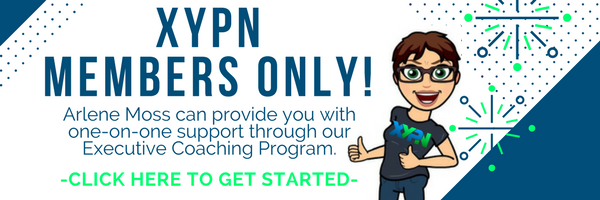Summer, the Season of Disaster Preparedness: What Would Arlene Say?
Share this

5.5 MIN READ
Wildfires and flooding and tornadoes, oh my! Summer always strikes me as a great time to remember the need for disaster preparedness. Every day seems to hold news of all manner of natural disaster. I previously wrote a blog on disaster preparedness. I reread it recently as I began pondering what to include here. It’s actually a pretty horrible blog post, but it was very therapeutic, so to all who read it and didn't scream “Don’t give up your day job, you’re a horrible writer!” I thank you.
Today I want to ponder disaster preparedness without the trauma of 2012 along for the ride.
Step One: Do You Even Have a Plan?
You should. No one is immune. Think about the risks you have, both minor and major. I tell my coaching clients to consider everything from coffee on the laptop keyboard to the catastrophic left-with-the-clothes-on-your-back loss.
A simple Google search will find quite a few options for disaster recovery templates, from the painfully simple to the corporate 75 page plan that no one will keep up to date. Take a look at a few templates and pick one you feel comfortable with. Since creating my eternally improving and yet still flawed disaster plan, I continue to revisit it. I find corrections or improvements every time I do it. And, yes, I include hard truths with a snippet of profanity just to keep my co-workers on their toes.
Step Two: Create the Plan
The first time through you may want a drink by the end. You’ll find gaps, and end up with a to-do list longer than your plan. That’s OK. Keep going. It’s a great part of the process to take the time to think about these things and make progress.
Step Three: Get the Tools You Need
There are so many tools available to help you with the minor disasters, there’s almost no excuse for traumatic hard drive issues. You can use a service that runs an automatic backup of your files nightly, or you can use a tool that allows you to store straight to the cloud. This will depend on your security needs and personal preferences. Keep in mind that saving to Dropbox, or directly to the cloud won’t help your program files. This is not just about saving client and personal files. Make sure you have the set up you want for the recovery time you need to have. In researching this article I found a review of 38 Online Backup Services. That pretty much covered every one I could think of and then some. If 38 is overwhelming and you don’t mind a smidge out of date info I like to use Lifehacker for a lot of my research. They have a top 5 posting for both online and offline backup tools.
Picture the day your computer dies. Do you have a backup that allows you to easily access your data and the programs you use? Make sure you have passwords accessible. Not on a post-it note, or a quasi-secret file on your computer, but an actual secure tool. I use LastPass, but there are others you can look into HERE and HERE. Pick one that fits your needs. And use it. That way no matter where you go you can log in to any site you need to. Even if you are stuck on a library computer, or a rental. And even when you are disaster free you are keeping your access more secure with the use of random passwords.
Step Four: Planning the Test & Testing the Plan
Create a list of all you do in a day. This is the beginning of your test plan. Just a simple spreadsheet will do, include all the items you want to access. Think about the ways you access them. Read-only? Do you need to download? Upload?
Can you get a phone message if you don’t have whatever you usually use to access the messages? I got so used to getting my messages with my phone that I forgot how to log in to the system remotely. I had a way, but I hadn't tested it or used it in ages. Now I have messages delivered in triplicate. One is online, one comes to my email and one is accessible through my phone. To mix it up I make sure I use the systems every once in a while rather than always getting messages the same way.
Go to a computer you have never used. Your business partner’s, the library, your best friend’s. Pretend you need to work for the day. Access some files, get to your email. Think of the tools you need and try to access them.
If you have a test plan you won’t have to think about what you might need you will have a list to check periodically to see if you truly can recover as quickly as you need to. Add the test to your calendar. I am continually surprised by how quickly the time flies by since the last test. If left to my own devices it would be years between test. Luckily my calendar knows when it is time. Take a look at that plan quarterly, because as technology changes you will be using new tools and I am willing to bet you will forget to add them to the plan when you start using your new toys.
One Last Tidbit
Think about how your office and home are arranged. If you have options make it easy to pack. When I first had to evacuate I discovered the photo albums on one floor, Christmas decorations in the recesses of the basement, and the search for the kids’ treasured stuffed animals was onerous. I am not suggesting you stay packed for your life, although it took me months to be brave enough to put photo albums back in the cabinet. I am suggesting if you have a storage closet on the main level it wouldn't go amiss to store your silver and the photos together (and yes, take the silver! It is god-awful expensive to replace, melts easily and is very hard to find to prove ownership as you sift through ashes. Trust me on this, it seems materialistic and tacky, but take the silver!). If you have a packing plan include where things are so you remember Great Aunt Hattie’s special 1st edition of A Christmas Carol is on the guest room bookshelf. This will speed things up and help you stay calm.
Now, rejoice in the fact you will probably never have to use the plans you make, get a nice glass of wine and start planning.
 About Arlene Moss, Executive Coach
About Arlene Moss, Executive Coach
Arlene gets a kick out of helping financial advisors get over being overwhelmed and take on their frustrations so their businesses soar. Arlene works to ensure XYPN members are able to help their clients prosper while creating a sustainable business model. Through XYPN Academy and one-on-one coaching, members get the support they need to grow their businesses and overcome the challenges that come their way.
Share this
- Fee-only advisor (381)
- Advice (305)
- Business Development (248)
- Independent Financial Advisor (203)
- Growing Your Firm (161)
- Marketing (133)
- Financial Planning (129)
- What Would Arlene Say (WWAS) (81)
- Business Coach (80)
- Firm Ownership (78)
- Training (75)
- Compliance (72)
- Business (69)
- Building Your Firm (65)
- Financial Advisors (63)
- Online Marketing (61)
- Events (59)
- Starting a Firm (52)
- Staffing & HR (49)
- Technology (49)
- From XYPN Members (48)
- Launching a firm (46)
- Advisors (41)
- Entrepreneurship (38)
- Taxes (37)
- Networking & Community (33)
- Interviews and Case Studies (32)
- Investment Management (31)
- Sales (27)
- Social Responsibility (27)
- Tax Preparation (27)
- XYPN Invest (26)
- Business Owner (25)
- Small Business Owner (20)
- Financial Management & Investment (19)
- Industry Trends & Insights (19)
- Financial Education (17)
- Financial Planners (17)
- Independent Financial Planner (17)
- Tech Stack (17)
- XYPN (17)
- Leadership & Vision (16)
- Investing (15)
- Niche (15)
- How to be a Financial Advisor (14)
- NextGen (14)
- RIA (14)
- Media (13)
- Preparing to Launch (13)
- Press Mentions (13)
- RIA Operations (12)
- RIA Owner (12)
- XYPN Membership (12)
- Assets Under Management (AUM) (11)
- First Year (11)
- Goals (11)
- Scaling (10)
- Advisor Success (9)
- Building Your Firm (8)
- Communication (8)
- Lessons (8)
- Study Group (8)
- Time Management (8)
- Virtual Advisor (8)
- Behavioral Finance (7)
- Growth (7)
- Pricing Models (7)
- From Our Advisors (6)
- Independent RIA (6)
- Money Management (6)
- Motivation (6)
- Processes (6)
- Automation (5)
- Broker-Dealers (5)
- College Planning (5)
- Filing Status (5)
- How I Did It series (5)
- Investment Planner (5)
- Mental Health (5)
- Michael Kitces (5)
- Preparing to Launch (5)
- RIA Operations (5)
- Retirement (5)
- Risk and Investing (5)
- S Corpration (5)
- Support System (5)
- TAMP (5)
- Wealth (5)
- Year-End (5)
- Client Services (4)
- Outsourcing (4)
- Selling a Firm (4)
- Succession Plans (4)
- Benchmarking Study (3)
- Budgeting (3)
- Career Changers (3)
- Engagement (3)
- Fiduciary (3)
- Getting Leads (3)
- Membership (3)
- Millennials (3)
- Monthly Retainer Model (3)
- Partnership (3)
- Pricing (3)
- Recordkeeping (3)
- Risk Assessment (3)
- Small Business (3)
- Staying Relevant (3)
- Work Life Balance (3)
- Advice-Only Planning (2)
- Bookkeeping (2)
- Charitable Donations (2)
- Client Acquisition (2)
- Differentiation (2)
- Health Care (2)
- IRA (2)
- Inflation (2)
- Productivity (2)
- Implementing (1)
Subscribe by email
You May Also Like
These Related Stories

Advice from Our Moms: What Would Arlene Say?

Saying "No" to Clients: What Would Arlene Say?




